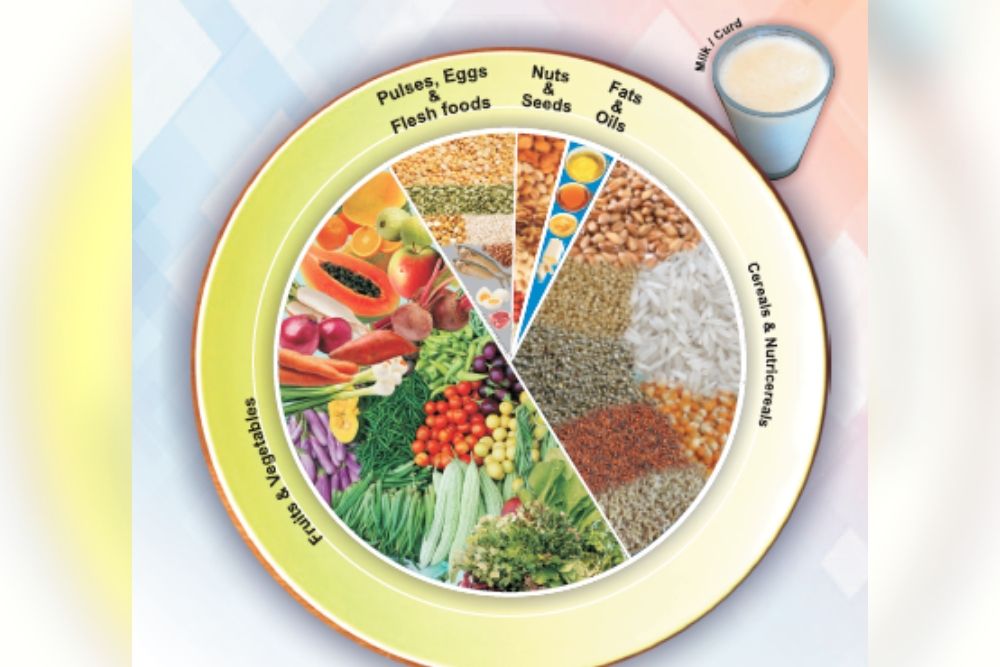
The food chart can help to explain what each food type is and how often they should be eaten. The largest and most compacted food group is the meat. While meat is rich in nutrients, it also contains essential nutrients. However, you can find the same nutrients in eggs, dairy products, and dry beans. As healthy alternatives to meat, there are many options, including tofu. They are made with soy, peanuts, and cheese. There are many other good sources for protein.
The food group chart shows the different types of foods, grouped into four quadrants. The vegetables and fruits comprise the first four sections. Next are grains and meat and any alternatives. These are the most nutritious and essential foods. These are the most popular types of food. You can use the food category chart to help determine how much each type should be eaten each day. In addition to the food groups, you should consider dietary supplements, which can help you achieve the ideal weight for your child.

The food group chart can help you learn about the different foods that provide certain nutrients. There are subgroups within each group. You can now focus on foods that are rich in a specific nutrient. You can increase the intake of whole grain in your diet by choosing those with high fiber content. Besides, whole grains are also considered as an essential part of a balanced diet.
Always remember to check the food group charts when shopping for groceries. This will help to keep you focused on what you eat and avoid certain foods. You will be able to make healthier choices, and it will make shopping at the grocery store more enjoyable. There are even healthful choices for your kids and pets at Sam's Club. Online shopping makes it easy to find the perfect product for your family.
The food group chart can help you choose the best foods to suit your needs. A healthy diet should contain a variety from all five food group. Experts suggest eating the recommended daily intake of each food group. It is important not to only eat one or two foods. It is important to include foods from each of the food groups. It is better to include them in your daily diet. The more fruits and vegetables you eat, the better.

The age-based divisions of the food group chart are shown below. Because they are high in nutrients, the youngest members of the family should consume more fruits and vegetables. People of all ages can eat the food groups on this pyramid. If you are pregnant or breastfeeding, consult your doctor to determine what foods to eat. If you're overweight or obese, you should consult your doctor before you start a diet.
FAQ
How does an antibiotic work?
Antibiotics are drugs that destroy harmful bacteria. The treatment of bacterial infections is done with antibiotics. There are many options for antibiotics. Some are administered topically, while others can be taken orally.
People who have been infected with certain germs may need antibiotics. An oral antibiotic might be prescribed to someone who has been exposed to chicken pox. This will prevent the spread of shingles. Or, if someone has had strep throat, he or she might receive an injection of penicillin to help prevent pneumonia.
When antibiotics are given to children, they should be given by a doctor. Side effects of antibiotics can be more dangerous for children than for adults.
Diarrhea is the most common side effect from antibiotics. Other possible side effects include diarrhea, nausea and vomiting, allergy reactions, dizziness, dizziness, stomach cramps, nausea, vomiting or allergic reactions. These symptoms generally disappear once the treatment has finished.
What's the problem with BMI?
BMI stands for Body Mass Index. This is a measure of body fat that is calculated based on height or weight. The following formula can be used to calculate BMI.
Divide the weight in kilograms by the height in meters squared.
The score is expressed as a number between 0 and 25. Scores between 0 and 25 indicate obesity. A score of 18.5 indicates overweight. A score of 23 indicates obesity.
A person who weighs 100 kg and has a height of 1.75 m will have a BMI of 22.
Is being cold bad for your immune system?
Cold can make you less immune to infection because your body makes fewer white blood cells, which are essential for fighting infections. But, cold makes you feel better. Your brain releases endorphins that reduce pain.
Why should we have a healthy lifestyle to begin with?
Healthy lifestyles lead to happier and longer lives. A healthy diet, regular exercise, good sleep habits, and stress management will help prevent diseases like heart disease, diabetes, cancer, and stroke.
A healthy lifestyle will also improve our mental health by helping us cope better with everyday stresses. Healthy living will boost self-confidence and make you look and feel younger.
What are 5 ways to live a healthy lifestyle?
Living a healthy lifestyle involves eating right and exercising regularly. You should avoid processed foods, sugar, or unhealthy fats. Exercise can help you burn calories and strengthen your muscles. Sleeping enough is good for memory and concentration. Stress management can reduce anxiety and depression. Fun is the key to keeping us healthy and happy.
What's the best diet?
Your lifestyle and individual needs will determine the best diet for your body. It is also important to think about how much energy you use during exercise and whether you like low-calorie foods.
Intermittent fasting is a good option if you're trying to lose weight. Intermittent fasting allows you to consume only certain meals per day, instead of eating three large meals. You may find that this method works better for you than traditional diets that include daily calorie counts.
Research suggests that intermittent fasting may increase insulin sensitivity and lower inflammation. This can result in a reduction in blood sugar levels and a reduced risk of developing diabetes. Intermittent fasting has been shown to promote fat loss as well as improve overall body composition.
Exercise: Is it good or bad for immunity?
Exercise is good exercise for your immune system. Your body makes white blood cells that fight infections when you exercise. Your body also eliminates toxins. Exercise helps prevent diseases like cancer and heart disease. It reduces stress.
Exercising too frequently can make your immune system weaker. When you exercise too hard, your muscles will become sore. This causes inflammation, swelling, and can even lead to death. Your body will then produce more antibodies in order to fight infections. The problem is that these extra antibodies can cause allergies and autoimmune disorders.
So, don't overdo it!
Statistics
- nutrients.[17]X Research sourceWhole grains to try include: 100% whole wheat pasta and bread, brown rice, whole grain oats, farro, millet, quinoa, and barley. (wikihow.com)
- The Dietary Guidelines for Americans recommend keeping added sugar intake below 10% of your daily calorie intake, while the World Health Organization recommends slashing added sugars to 5% or less of your daily calories for optimal health (59Trusted (healthline.com)
- According to the Physical Activity Guidelines for Americans, we should strive for at least 150 minutes of moderate intensity activity each week (54Trusted Source Smoking, harmful use of drugs, and alcohol abuse can all seriously negatively affect your health. (healthline.com)
- According to the 2020 Dietary Guidelines for Americans, a balanced diet high in fruits and vegetables, lean protein, low-fat dairy and whole grains is needed for optimal energy. (mayoclinichealthsystem.org)
External Links
How To
What does the meaning of "vitamin?"
Vitamins are organic compounds naturally found in food. Vitamins help us absorb nutrients from foods we eat. Vitamins cannot be made by the body; they must be taken from food.
There are two types vitamins: water soluble or fat soluble. Water soluble vitamins dissolve easily in water. Examples include vitamin C,B1 (thiamine), B2 (riboflavin), B3 (niacin), B6 (pyridoxine), folic acid, biotin, pantothenic acid, and choline. Fat-soluble vitamins are stored in the liver, fatty tissue and kidneys. Vitamin D, E, K and A are some examples.
Vitamins can be classified according to biological activity. There are eight major categories of vitamins.
-
A - essential for normal growth and maintenance of health.
-
C - important for proper nerve function and energy production.
-
D - essential for healthy bones, teeth, and gums.
-
E - needed for good vision and reproduction.
-
K - required for healthy muscles and nerves.
-
P - essential for strong bones, teeth and tendons
-
Q - aids digestion and absorption of iron.
-
R - Red blood cells are made from red blood cells.
The recommended daily allowance of vitamins (RDA), varies according to age, gender, physical condition, and other factors. The U.S. Food and Drug Administration has established the RDA values.
For adults over 19, the RDA for vitaminA is 400 micrograms per daily. Because it is essential for the development of the fetus, pregnant women should consume 600 micrograms per daily. Children ages 1-8 require 900 micrograms per day. Children under 1 year old require 700 micrograms daily, while infants over one year old need 500 micrograms every day. This decreases between 9 and 12 months.
Children ages 1-18years who are obese need 800 micrograms per day while those who are overweight need 1000 micrograms per day and children who are underweight need 1200 micrograms per day to meet their nutritional needs.
Children ages 4-8 years who have been diagnosed with anemia need 2200 micrograms per day of vitamin C.
2000 micrograms are required daily for good health in adults over 50. Breastfeeding or pregnant women require 3000 micrograms per daily due to higher nutrient demands.
Adults over 70 require 1500 micrograms each day, since they lose around 10% of their muscle mass every decade.
Women who are pregnant and lactating need more nutrients than the RDA. Pregnant and breastfeeding women require 4000 micrograms each day during pregnancy and 2500 Micrograms each day after delivery. Breastfeeding mothers need to consume 5000 micrograms every day when breastmilk has been produced.